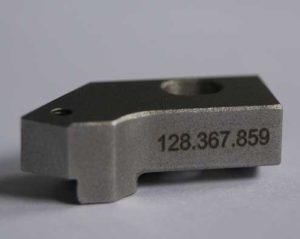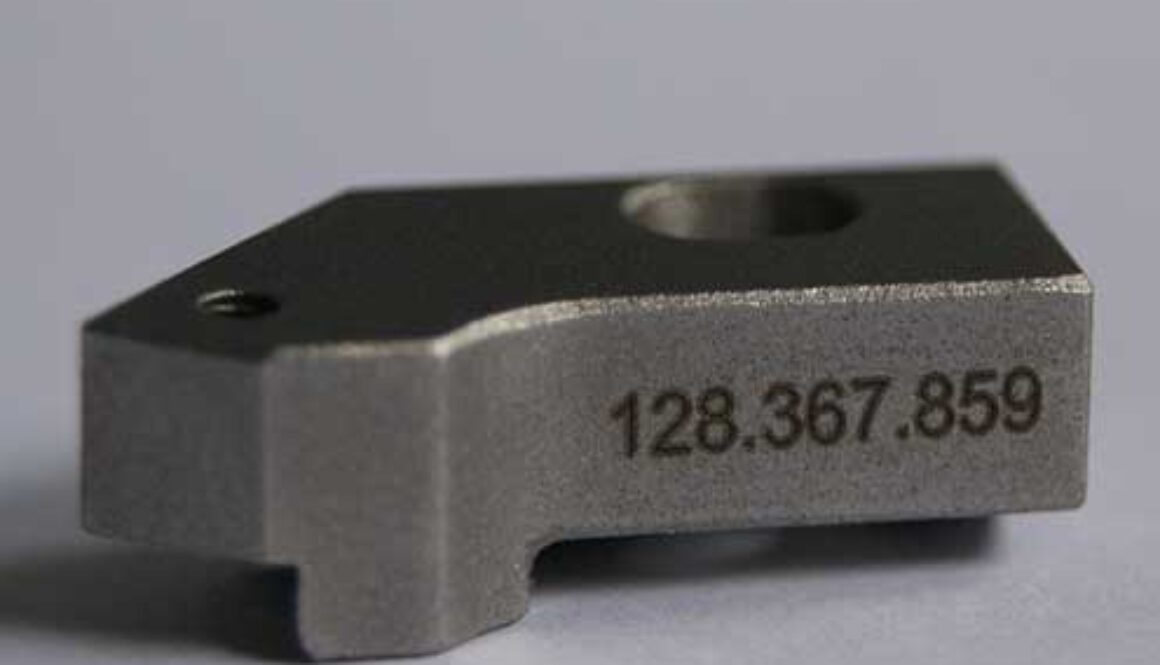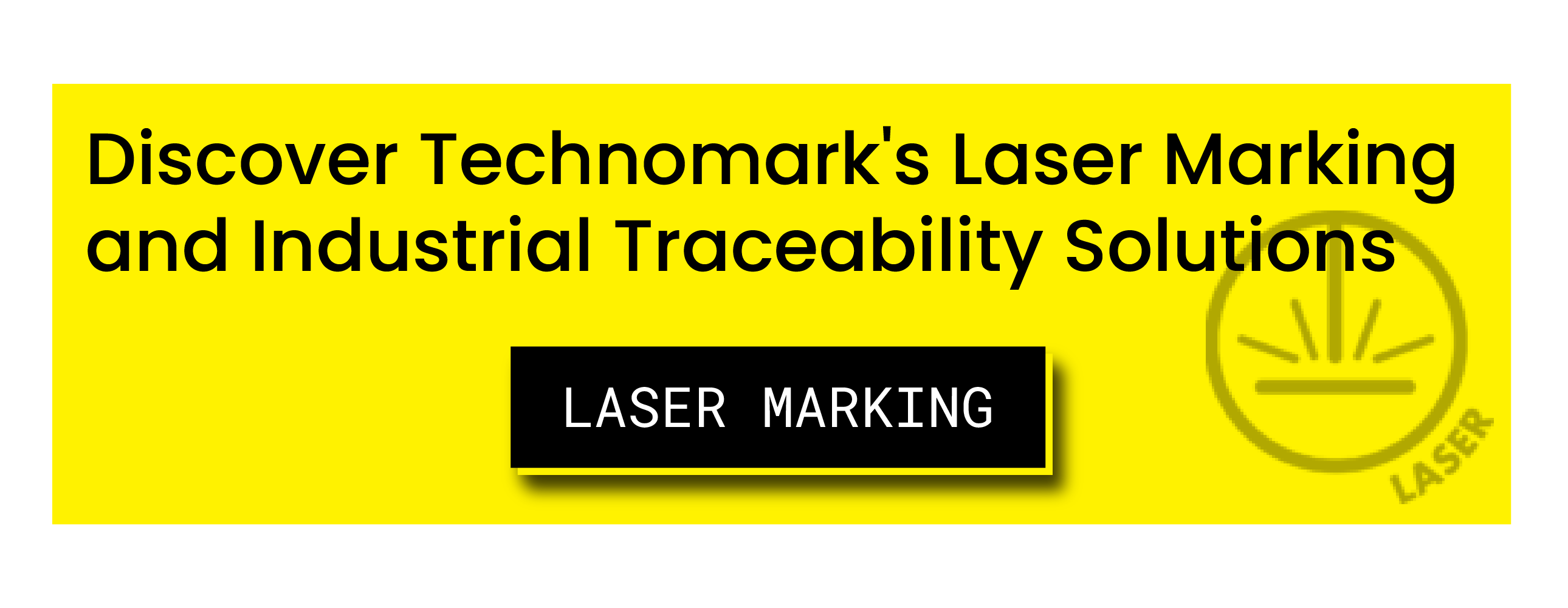The Science Behind Industrial Laser Marking Systems: Understanding Material Interactions

Industrial laser marking systems are used across a wide range of industries and trusted for precision and accuracy to provide marks that are easy to read and stand up to wear and tear over time.
Laser marking machines are capable of marking on a variety of materials, but the material influences the adjustments that need to be made. For example, when the situation calls for laser engraving for metal, the type of metal and the surface preparation influence the quality of the mark and the potential for defects.
Understanding how the laser beam interacts with each type of material and what factors influence the final outcome can go a long way in avoiding defects or issues when industrial laser markers permanently mark products.
Thermal Effect and Marking Quality for Industrial Laser Marking Systems
Heat conduction and diffusion play a crucial role in influencing laser marking technologies and can significantly change the marking quality and efficiency on different materials. Understanding these thermal effects is essential for optimizing the laser marking parameters and achieving desired results.
Metals, especially those with high thermal conductivity (e.g., copper, aluminum), can rapidly dissipate heat away from the laser-material interaction zone, leading to reduced marking efficiency and potential heat-affected zones. Materials with lower thermal conductivity (e.g., plastics, ceramics) tend to localize the heat generated by the laser, resulting in more efficient marking and minimizing heat-affected zones.
When using short laser pulse durations (e.g., nanosecond, picosecond, femtosecond) for marking applications, the heat diffusion during the pulse is minimal, leading to more localized energy deposition and reduced heat-affected zones. With longer pulse durations (e.g., millisecond), heat diffusion becomes more significant, potentially causing larger heat-affected zones and undesirable effects like melting or distortion around the marked area.
Materials with high thermal conductivity (e.g., metals) can rapidly dissipate heat, making it challenging to achieve efficient marking without using higher laser powers or shorter pulse durations. Materials with low thermal diffusivity (e.g., ceramics, some polymers) can better confine the heat to the laser-material interaction zone, improving marking efficiency and reducing heat-affected zones.
For thin materials or substrates, heat dissipation can occur rapidly through the material thickness, potentially affecting marking quality and efficiency. Thicker materials or substrates can better confine the heat, leading to more efficient marking, but also increasing the risk of heat accumulation and potential material degradation. Complex geometries or curvatures can influence heat flow and dissipation, affecting the marking process and requiring adjustments to laser parameters or beam delivery optics.
Another area of consideration is the marking strategies that will be implemented and the potential for heat accumulation. The use of specific scanning patterns (e.g., hatching, spiraling) can influence heat accumulation and dissipation, impacting marking quality and efficiency. Meanwhile, overlapping laser pulses or scans can lead to heat accumulation as well, potentially causing material degradation or undesirable effects.
Another option is the choice to employ pulsing strategies, such as pulse bursts. This approach can help manage heat accumulation and dissipation, improving marking quality and reducing heat-affected zones.
Proper control and management of heat conduction and diffusion can lead to improved marking efficiency, reduced heat-affected zones, and better overall marking quality. In some cases, active cooling techniques (e.g., air or liquid cooling) or auxiliary processes (e.g., pre-heating or post-cooling) may be employed to further manage heat effects and achieve desired marking results on specific materials or applications.
Laser Marking Optimization Tips for Industrial Laser Marking Systems
To optimize laser marking based on the interaction with different materials, several key parameters need to be considered and adjusted. Here’s an outline of the best ways to generate high-quality part marking, focusing on factors such as wavelength, power, pulse duration, and beam quality:
| Wavelength selection: | The wavelength of the laser should be chosen based on the material’s absorption characteristics. For metals for example, longer wavelengths can mark products efficiently. Some materials may exhibit better absorption at specific wavelengths due to their chemical composition or color pigments.
|
| Power and pulse duration: | Higher power and shorter pulse durations are generally preferred for efficient material removal or ablation. For metals, higher power and shorter pulses can promote melting, vaporization, and oxidation processes. For non-metals, lower power and longer pulses may be better suited to prevent excessive material degradation or charring. The optimal combination of power and pulse duration depends on the material’s thermal properties and the desired marking quality.
|
| Beam quality and focusing: | A high-quality laser beam with good focus and consistent intensity distribution is crucial for precise and consistent marking. Proper beam focusing can concentrate the laser energy onto a small area, increasing the energy density and improving marking efficiency. Factors like beam divergence, mode quality, and focal spot size should be optimized for the specific material and marking requirements.
|
| Scanning and overlapping: | For larger marking areas or complex patterns, the laser beam may need to be scanned or overlapped across the surface. The scanning speed, overlapping percentage, and scanning strategy (e.g., hatching, spiraling) can affect the marking quality and efficiency. Optimizing these parameters can ensure uniform marking and minimize heat-affected zones or material damage.
|
| Surface preparation: | Proper surface preparation can significantly improve marking quality and contrast. Cleaning and degreasing the surface can enhance laser absorption and reduce contamination. Applying contrast-enhancing coatings or primers can increase marking visibility on certain materials, especially non-metals.
|
| Environmental considerations: | Factors like ambient temperature, humidity, and atmospheric conditions can influence the laser-material interaction and marking results. Controlling these environmental factors or adjusting the laser parameters accordingly can ensure consistent marking performance.
|
| Material testing and characterization: | Conducting material testing and characterization is essential for optimizing laser marking parameters. Techniques like spectroscopy, thermal analysis, and microscopy can provide insights into the material’s optical, thermal, and physical properties. This information can guide the selection of appropriate laser parameters and marking strategies. |
Material Interaction and Industrial Laser Marking Machine Settings
Finding the optimal laser marking solution is an iterative process that may require extensive testing and adjustment of multiple parameters. Collaboration between material scientists, laser experts, and application engineers is often necessary to achieve the desired marking quality, efficiency, and durability for specific materials and applications.
Proper selection of laser parameters, such as wavelength, power, pulse duration, and beam characteristics, is crucial for achieving optimal marking results. The laser parameters should be adjusted to match the specific material composition and desired marking quality. Depending on the carbon fiber composite material and the desired marking contrast, surface preparation techniques, such as applying contrast-enhancing coatings or primers, may be necessary to improve marking visibility and durability.
Ready to Learn More About Laser Marking?
Our resource library offers multiple options for further reading to provide a better understanding of what your needs might be with laser marking systems. For example, we have this resource you can take with you:


